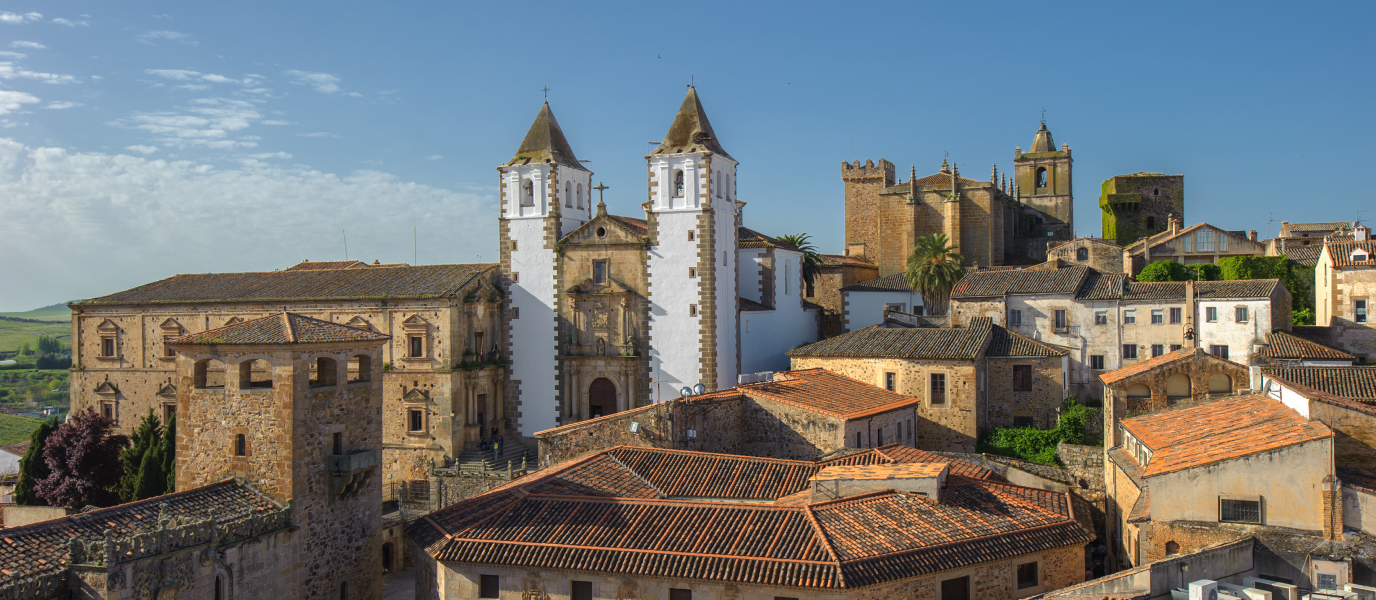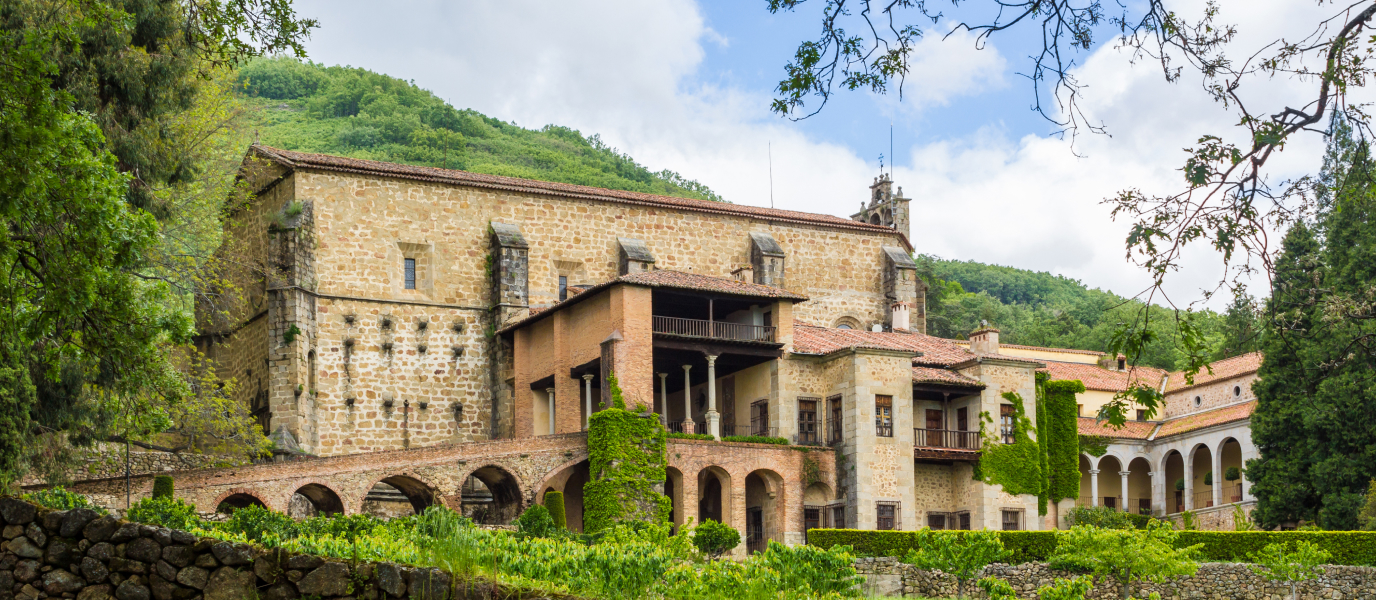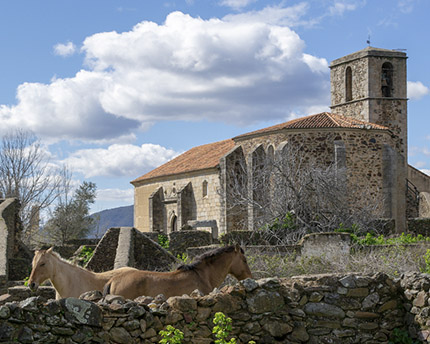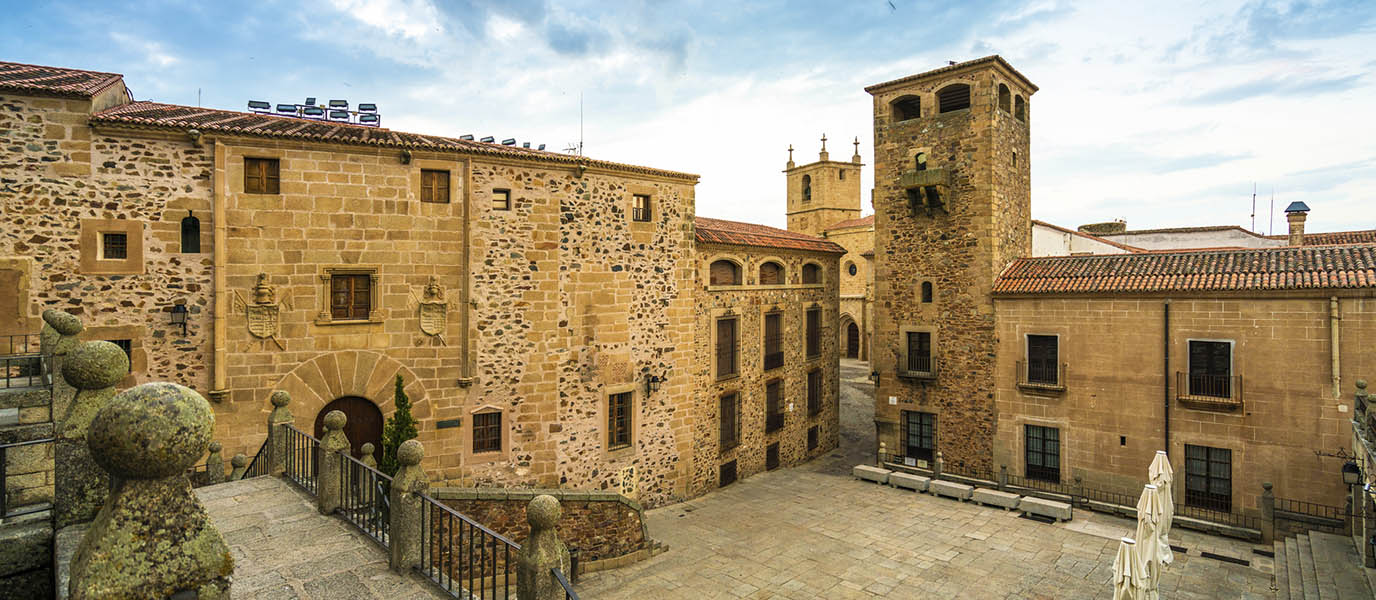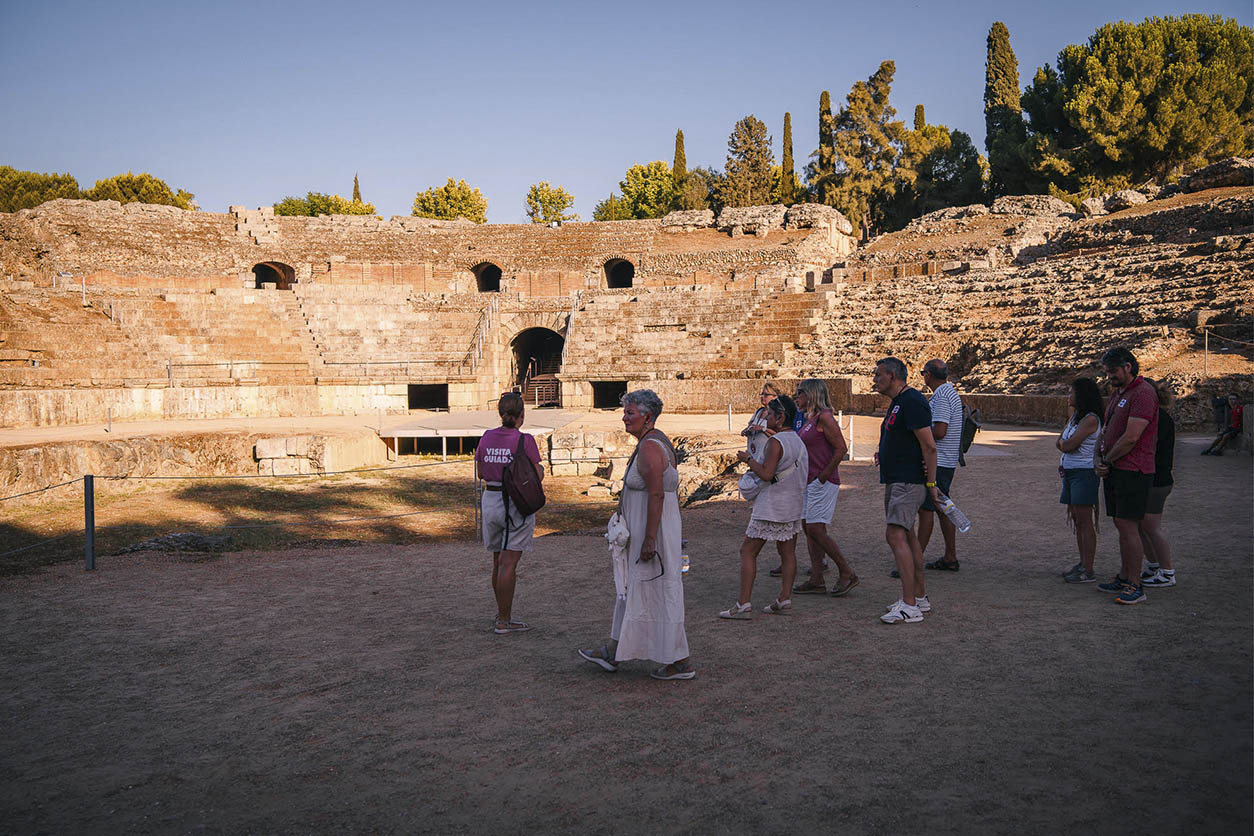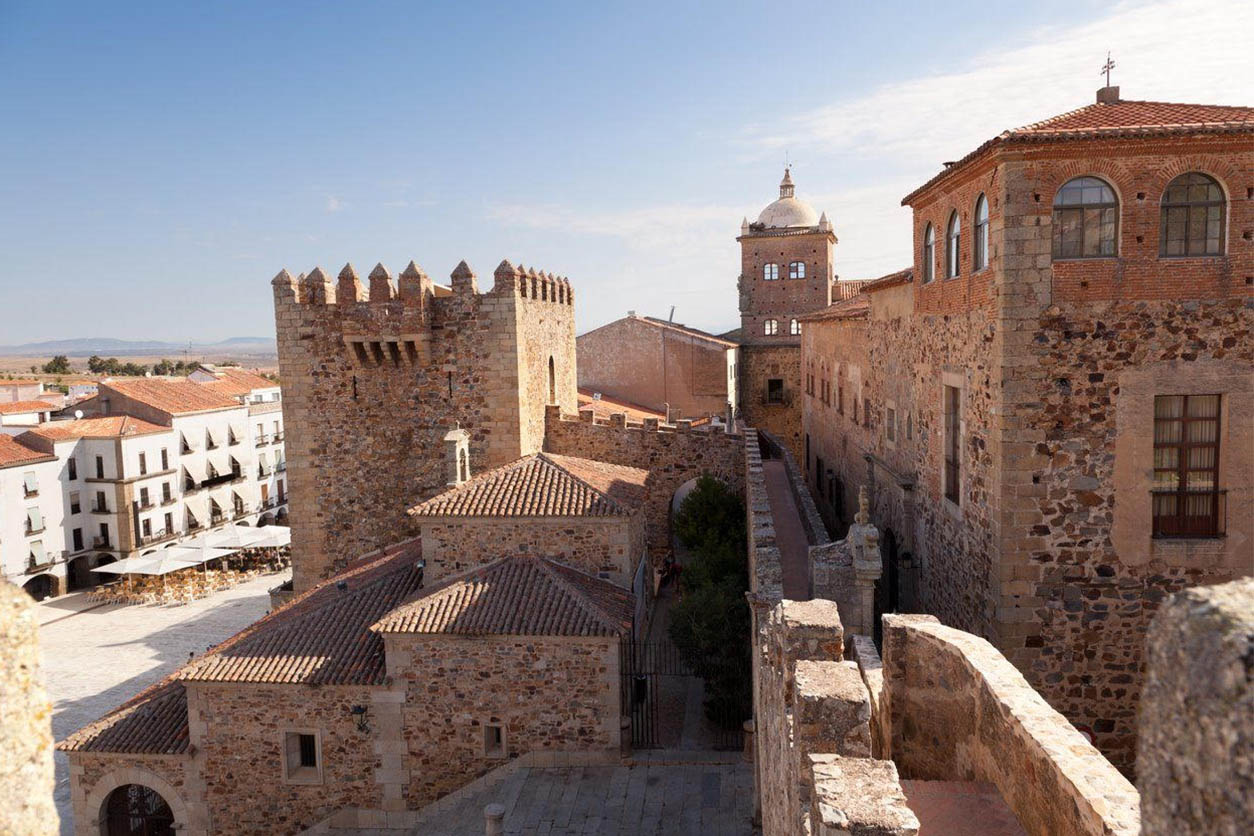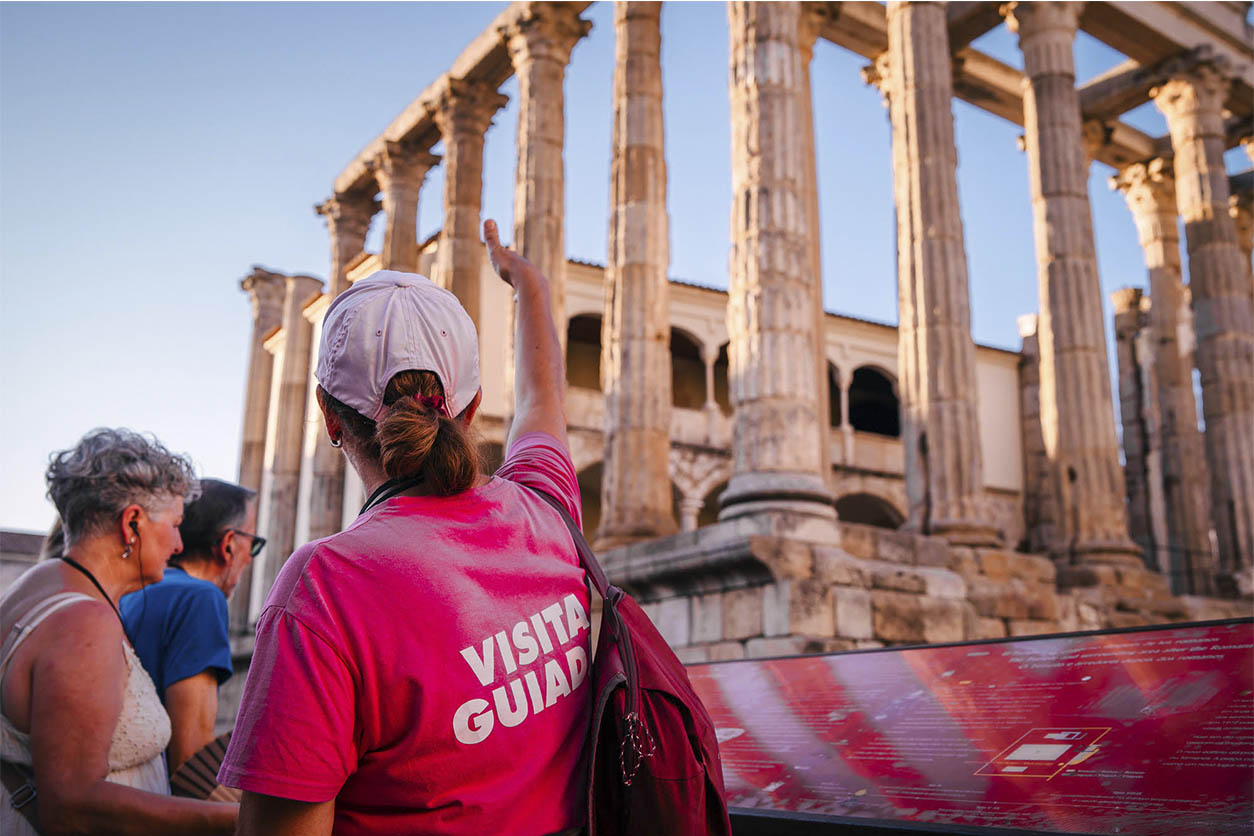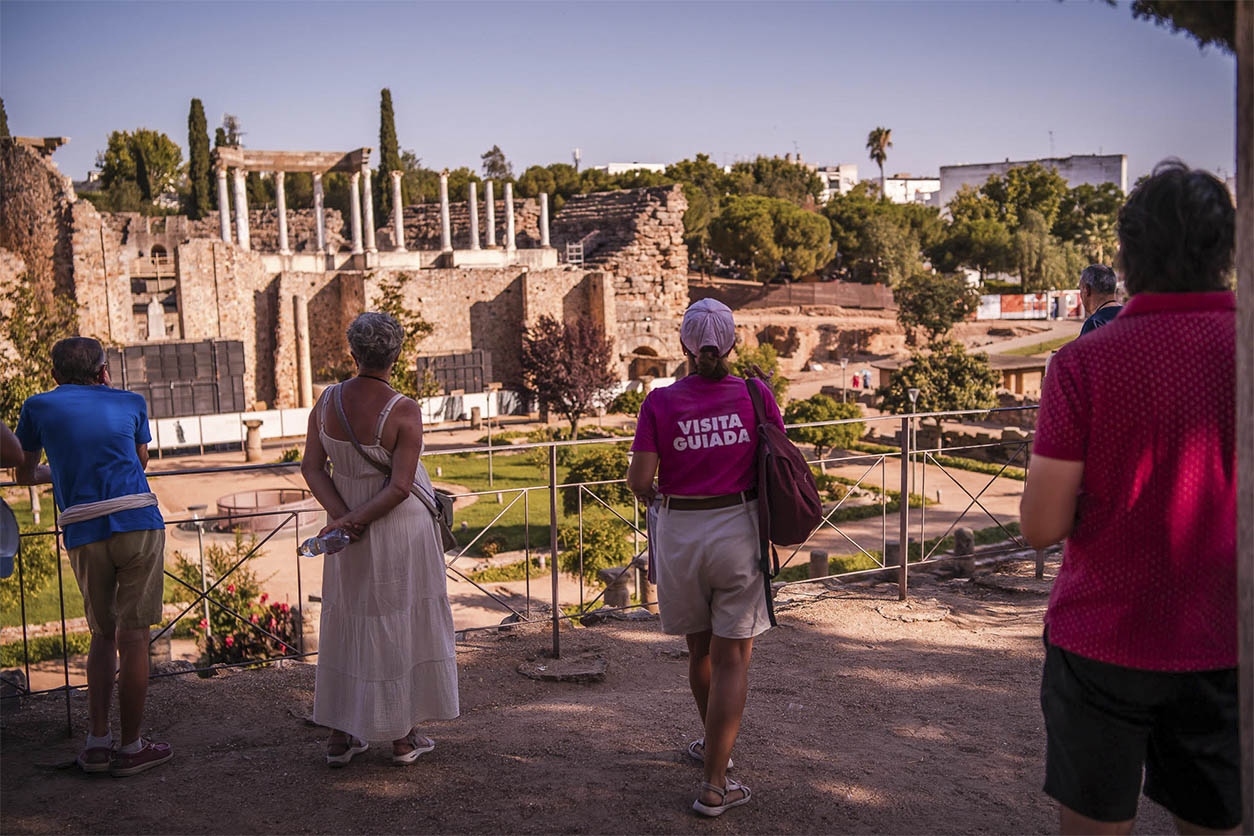Just to the south-east of the old town, shrouded by the outer city walls, lies one of the city’s most delightful and least known areas: the old Jewish Quarter. This quaint nook of the city is full of narrow streets that open out onto beautiful whitewashed squares with pretty gardens, palatial and humble homes alike. In its time, the Jewish Quarter of Cáceres was one of the jewels of the Sepharad, the name the Jewish people gave to their Spanish homeland.
The Jewish Quarter: a peaceful latticework of once-bustling homes
The old Jewish Quarter of Cáceres stands out from the rest of the city for the sheer beauty of its streets and houses. The small gardens and the olive grove, perhaps the most visited part of the Jewish Quarter, bring colour to the whitewashed houses and a sense of peace for the visitor at any time of day.
This sense of peace was not always a characteristic of the Jewish Quarter, however. Prior to 1492 this neighbourhood would have been a bustling hive of family life and commerce. The Jewish population of Cáceres set up their community when the Iberian Peninsula was under control of the Moors. When the Christians conquered the city in 1229, king Fernando III decreed that the Jewish people could continue the way of life they had established under Moorish rule. This constituted a certain level of autonomy in the city, which allowed them to establish their own neighbourhood government, called and Aljama, and to pass sentences in local lawsuits according to the Torah or the 10 Commandments. One of the main reasons Fernando III made this concession was the need to repopulate the city after the bloody ‘re-conquest’ he had enacted upon it.
The ‘Code of Cáceres,’ which protected the rights of Jews and Muslims in Cáceres, was left more or less unchanged until 1492. In that fateful year, however, the conquering ‘Catholic Monarchs’ decreed that all Jewish residents of Spain must either convert to Christianity or leave. This resulted in a whole community abandoning their homes – where they had lived for centuries prior to the Christian ‘re-conquest’ of the Iberian Peninsula – en masse and going into exile.
Today, the local residents of Cáceres preserve the memory of this once thriving community in their efforts to take care of the old Jewish neighbourhood. Thanks to their efforts, it is the perfect place to take a stroll and lose yourself in the heart of the city.
Stepping into the Jewish Quarter
Although it is not known how large the Jewish Quarter was at the height of its occupation, today it is part of the neighbourhood known today as Barrio de San Antonio de la Quebrada, just to the south-east of the old town and just a few streets away from Plaza Mayor.
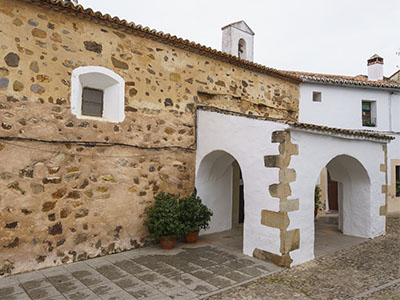
Once inside the Old Jewish quarter you will see long steps hewn out of local stone, a series of small gardens and pretty balconies strewn with colourful flowerpots along the narrow streets. These streets, you will find, have a strange uneven character that gave the modern neighbourhood its name, la Quebrada, which translates as ‘the ravine’. Following these quaint alleyways up and down, twisting through houses both rich and poor, is what gives the old Jewish Quarter its quaint personality today.
A neighbourhood teeming with history and surprises
Walking in a south-easterly direction from the Cathedral, you take the small incline up what is known as the Compañía to Plaza de las Veletas. From there the small alleyway of Don Álvaro will take you into the Jewish Quarter. Once inside, you will see that this small neighbourhood is full of historical gems, such as the its many palatial houses, the old Roman entrance to the city called the ‘Rampart of Christ’ (adarve de Cristo), the Yusuf museum and the old Jewish cemetery with the thermal baths nearby. Some of the more famous sites in the Jewish Quarter are:
- Baluarte de los Pozos. This defensive bastion contains a 12th century Moorish tower, a spacious garden and a lookout point, from which you can get a fantastic view of the city and its environs.
- The Olive Grove. This public park is a favourite among visitors who want to get away from the hustle and bustle of the city centre and have a peaceful stroll during which they can get a great view of the city and the imagine this area during its heyday.
- The Old Synagogue (now the Ermita de San Antonio). This was the epicentre of Jewish life in the city of Cáceres. However, in 1470 the Christian governors stripped the Jewish population of this building, forcing them to take their worship elsewhere. After this, the governors tore down the original synagogue and built the chapel on top of it. Thankfully, some elements of the original still survive, such as the patio and the altar, and these are worth seeing today.
- The New Jewish Quarter (Nueva Judería). In 1478, after many more Christian victories, the Jewish population was forced out of their old neighbourhood and set up their homes in another near Plaza Mayor. Today, the magnificent Palacio del Marqués de la Isla, with its vaulted ceilings and interior gardens, still bears the traces of its past as the ‘new’ synagogue the Jewish people built when they were forced out of their homes for the first time. Calle de la Cruz, was the centre of this new Jewish Quarter and it too still bears the traces of the Jewish culture that lived there before they were sent into exile.




































































